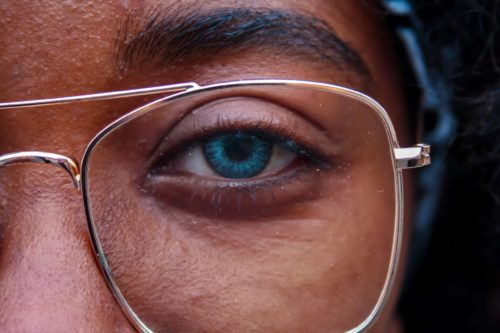
What the Modest is Hottest Message Gets Wrong
Most of the time, when we talk about modesty and lust in the summertime, we’re telling the women what to wear. We want them to dress modestly so that men won’t lust. We forget that women can struggle with lust too. So I struggled to come up with some metric. Some balance when writing a post on swimsuits. What should you wear? What shouldn’t you wear?
Then I realized, modesty isn’t really about what you wear.
I grew up in a conservative Christian environment that had a dress code for swimming. Women had to wear one piece swimsuits, even when swimming with just the girls (because the lifeguards might be male). And if it was a co-ed swim, we had to wear a t-shirt (but it couldn’t be white) and culottes over our one piece. If you don’t know what culottes are, allow me:
If you’re thinking to yourself, “Wow… those don’t look comfortable to swim in” you would be exactly right. In fact, when they are completely soaked in water, they were practically a safety hazard.
Still, we were told it was necessary in order to be modest. The guys, on the other hand, could wear their swim trunks with a t-shirt. Basically, every co-ed swim turned into a wet t-shirt contest. My teenage, sex-obsessed brain was constantly in overdrive.
Around that time the phrase “modest is hottest” was all the rage. It was how young women were encouraged to be modest. Essentially, the message was “do you want to be really attractive? Wear more clothes.”
Now it is resurging, courtesy of some new song I haven’t even listened to but that has gotten the Christian TikTok world fired up. If you break it down, it’s actually really confusing logic. We’re told to be modest to help men not to lust. The motivation for doing so is that men actually find modesty more attractive. Wait… so I can’t win, can I? What happens when I cover up to keep the guys from lusting and see a guy checking me out at the beach? Am I supposed to run away, cover up some more, or consider him great marriage material because he finds “modest hottest?”
The reason it doesn’t make sense is because modesty isn’t about your clothes. When I tried to write this post earlier, I tried to come up with some list of questions to ask before you hit the beach. A metric that would somehow allow for Christian women to wear a t-shirt and culottes if they felt so inclined but also free them up to wear a two piece. There isn’t a metric. There isn’t a formula. Why is that?
Modesty is about our heart and actions more than our clothes.
No metric or series of questions I could come up with could adequately address the heart issues that exist here. You can be completely immodest in a one piece swimsuit and completely modest in a bikini. Heresy? No, and I can prove it.
Let’s step away from the beach for a minute and into a hospital. Stay with me. If a patient comes into the hospital seeking help and need to disrobe for an exam, they are not being immodest. They may be completely naked, but they are not immodest.
If, for whatever reason, the doctors and nurses take advantage of them or lust after them, we would agree (I hope) that the blame falls squarely on the doctors and nurses, not the patient. I think we would also agree that this is not an issue for 99.9% of the medical field. They are daily exposed to the human body and have studied it extensively. So a patient’s level of dress is not modest/immodest.
However, if that patient strips down for a necessary exam but then begins to seductively flirt with the doctors or nurses, the patient is now being immodest. Nothing about their level of dress changed. What changed was their actions.
If that same patient were to attend a football game and streak naked down the field, that would be immodest. If that same patient were to go to the football game and grind up against someone fully clothed, that would be immodest. The level of dress changed but both were immodest.
Modesty isn’t about our level of dress or undress. Some might argue that the difference is that nurses and doctors are trained professionals and that’s why it’s ok to be “immodest” (unclothed) around them. But I would argue something different. People in the medical field see other people as people worthy of compassion, care, and dignity.
We have to start treating people like people.
Pornography teaches us that people are objects, there to be consumed. Unfortunately, some of our messages on purity and modesty can do the same. When we carry that mindset with us to public places, like the beach or the neighborhood pool, we’re tempted to continue consuming or to be consumed.
Things change when we stop and remember that these are people and their state of dress or undress isn’t for us. Likewise, our state of dress or undress shouldn’t be for other people.
I think that’s the most important thing to keep in mind as we approach summer. We are more than what our swimsuits are covering or uncovering. Modest/Immodest dress is no indicator of our heart or our worth.
One of the pitfalls of messages like “modest is hottest” is that in trying to dignify the human body it continues to objectify it.
It continues to oversexualize it. Are we sexual beings? Yes. Are our bodies fearfully and wonderfully made? Yes. They are not dangerous and must be covered up. They are not ugly and must be hidden.
Our bodies are woven together by the Creator of the universe. Our bodies are not meant for consumption. While lust and pornography try to strip away that human dignity and reduce us to a collection of flesh, the love of Christ mandates that we see each other (and ourselves) as created in the image of God (the “imago Dei”), worthy of dignity, respect, and compassion regardless of our state of dress. Whether you struggle with lust or are worried about other people’s lust or both, my encouragement to you this summer would be to conduct yourself in a way that reflects your worth.





